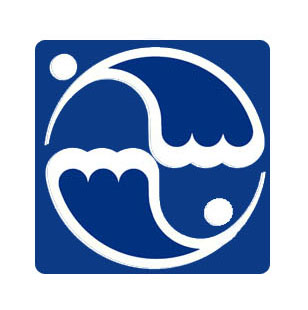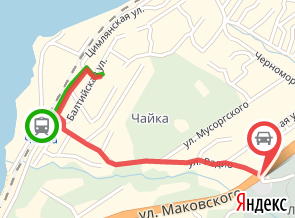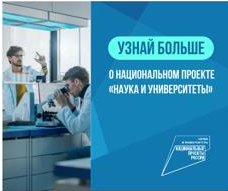|
Subdivision
Science degree
Dr.Sc.
Academic title
corresponding member of Russian Academy of Sciences
email
|
Research highlights
- Recent discovery of massive methane emissions from the Eastern Arctic Seas (EAS) into the atmosphere (Shakhova, Semiletov et al., Science, 2010) led to a complete revision of the concept of studying the role of permafrost, which had been previously considered stable and impervious to gases. It turned out that the amount of methane entering the atmosphere from the EAS shelf is higher than the methane emission from the Entire world ocean (Shakhova, Semiletov et al., Nature Geoscience, 2014). Moreover, in 2011, mega-seeps of bubble methane, reaching 1000 meters or more across, were discovered in the Laptev Sea. Repeated quantitative studies performed in the same area in 2012 and 2014 showed an increase in the cross-section of methane mega-seeps (over 350%, compared to 2011) in the presence of abnormal bubble fluxes of up to 100g of methane per square meter per day or more (Shakhova, Semiletov et al., Philosophical Transactions of the Royal Society A, 2015).
- To clarify the state of the permafrost in 2011-2016, four large-scale complex expeditions in the summer and five winter sledge-tractor expeditions were conducted in the EAS under the leadership of I. P. Semiletov, with scientific core drilling from the ice of the Laptev Sea. For the first time, the results of seismic profiling (together with IO RAS) and electromagnetic sounding (together with MSU) were analyzed from drilling data, which allowed us to come to a reliable conclusion that the permafrost roof deepened (up to 100 m or more) in a significant part of the EAS water area, which implies the possibility of destabilization of the mega-pool of methane hydrates. This does not exclude the possibility of a catastrophic release of methane into the atmosphere. This result was included in the main results of the RAS in 2017 and requires further and immediate research.
- In the work summarizing the 12-year cycle of works in the EAS, it was shown that the mechanism of water acidification in the EAS is determined by oxidation of erosive carbon to carbon dioxide and increasing runoff of Siberian rivers, which is fundamentally different from the generally accepted mechanism - due to the absorption of excess anthropogenic CO2 from the atmosphere (Semiletov et al., Nature Geoscience, 2016).
- The latest major work based on the results of scientific drilling from ice on the Laptev sea shelf (2011-2015) and the latest complex biogeochemical and geophysical studies in the EAS shows that the vertical degradation rate of permafrost has increased significantly in recent decades and reached 18cm per year, which is significantly higher (5-7 times) than it was previously assumed. In addition, the conclusion that the upper acoustic reflector, registered in many geophysical Arctic expeditions, is a gas (methane) front, not the roof of the permafrost, as it was previously thought, was scientifically justified. Moreover, it was proved that the gas front moves towards the surface of the EAS sediments at a speed of up to 5-6 m per year. A new mechanism for accelerating methane release was discovered by cutting up the keel of the stamukhas and icebergs of surface sediments up to the depth of migrating gas front, which leads to a massive discharge of methane into the water column and atmosphere (Shakhova, Semiletov et al., Nature Communications, 2017).
Key publications
Selected papers in journals with impact factor 3 to 40
- Semiletov I., Pipko I., Gustafsson Ö., Anderson L.G., Sergienko V., Pugach S., Dudarev O., Charkin A., Gukov A., Bröder L., Andersson A., Spivak E., Shakhova N. Acidification of East Siberian Arctic Shelf waters through addition of freshwater and terrestrial carbon // Nature Geoscience, 2016, vol. 9, 361-365, doi: 10.1038/NGEO2695.
- Shakhova N., I. Semiletov, Ö. Gustafsson, V. Sergienko, L. Lobkovsky, O. Dudarev, V. Tumskoy, M. Grigoriev, A. Mazurov, A. Salyuk, R. Ananiev, A. Koshurnikov, D. Kosmach, A. Charkin, N. Dmitrevsky, V. Karnaukh, A. Gunar, A. Meluzov and Chernykh D. Current rates and mechanisms of subsea permafrost degradation in the East Siberian Arctic Shelf // Nature Communications, 8,15872, DOI: 10.1038/ncomms15872.
- Shakhova N., Semiletov I., Leifer I., Sergienko V., Salyuk A., Kosmach D., Chernikh D., Stubbs Ch., Nicolsky D., Tumskoy V., and Gustafsson Ö. Ebullition and storm-induced methane release from the East Siberian Arctic Shelf // Nature Geoscience, 2014. 7, 64-70. doi: 10.1038/NGEO2007.
- Shakhova N., Semiletov I., Sergienko V., Lobkovsky L., Yusupov V., Salyuk A., Salomatin A., Chernykh D., Kosmach D., Panteleev G., Nicolsky D., Samarkin V., Joye S., Charkin A., Dudarev O., Meluzov A. and Gustafsson Ö. The East Siberian Arctic Shelf: towards further assessment of permafrost-related methane fluxes and role of sea ice // Phil. Trans. R. Soc. A, 2015, 373: 20140451. (Philosophical Transactions of the Royal Society A).
- Semiletov I.P., Shakhova N. E., Pipko I.I., Pugach S.P., Charkin A.N., Dudarev O.V., Kosmach D.A., and S. Nishino (2013), Space-time dynamics of carbon stocks and environmental parameters related to carbon dioxide emissions in the Buor-Khaya Bay of the Laptev Sea, Biogeosciences, 10, 5977-5996; doi:10.5194/bg-10-5977-2013
- Semiletov I.P., Shakhova N. E., Sergienko V.I., Pipko I.I., and O. Dudarev (2012). On Carbon Transport and Fate in the East Siberian Arctic Land-Shelf-Atmosphere System, Environment Research Letters, 7, doi:10.1088/1748-9326/7/1/015201
- Vonk, J. E., L. Sánchez-García, B. E. van Dongen, V. Alling, D. Kosmach, A. Charkin, I. P. Semiletov, O. V. Dudarev, N. Shakhova, P. Roos, T. I. Eglinton, A. Andersson, and Ö. Gustafsson (2012), Activation of old carbon by erosion of coastal and subsea permafrost in Arctic Siberia, Nature, 489 (7414), 137-140.
- Semiletov I.P., Pipko I.I., Shakhova N.E., Dudarev O.V., Pugach S.P., Charkin A.N., McRoy C.P., Kosmach D., and Ö. Gustafsson (2011). Carbon transport by the Lena River from its headwaters to the Arctic Ocean, with emphasis on fluvial input of terrestrial particulate organic carbon vs. carbon transport by coastal erosion, Biogeosciences, 8, 2407-2426.
- Semiletov I.P. and Ö. Gustafsson, (2009). East Siberian Shelf Study Alleviates Scarcity of Observations. Eos, Transactions, AGU, vol. 90, number 17, 28 April 2009, p. 145-146.
- Shakhova N., Semiletov I., Salyuk A., Joussupov V., Kosmach D., and Ö. Gustafsson (2010). Extensive methane venting to the atmosphere from sediments of the East Siberian Arctic Shelf, Science 327, 1246-1250.
- Shakhova N., Semiletov I., Leifer I., Rekant P., Salyuk A., and D. Kosmach (2010). Geochemical and geophysical evidence of methane release from the inner East Siberian Shelf, Journal Geophys. Res., 115, doi:10.1029/2009JC005602.
- Semiletov, I., I.I. Pipko, I.A. Repina, and N. Shakhova, 2007, Carbonate dynamics and carbon dioxide fluxes across the atmosphere-ice-water interfaces in the Arctic Ocean Pacific sector of the Arctic, Journal of Marine Systems, 66 (1-4), 204-226.
- Shakhova, N. and I. Semiletov, 2007, Methane release and coastal environment in the East Siberian Arctic shelf, Journal of Marine Systems, 66 (1-4), 227-243.
- Semiletov, I., O. Dudarev, V. Luchin, K.-H. Shin, and N. Tanaka, 2005, The East-Siberian Sea as a transition zone between Pacific-derived waters and Artic shelf waters, Geophysical Research Letters, 32, L10614/2005GL022490.
- Semiletov, I., A. Makshtas, S.-I. Akasofu, and E.L. Andreas, 2004, Atmospheric CO2 balance: the role of Arctic sea ice, Geophysical Research Letters, 31, L05121, doi: 10.1029/2003GL017996.
- Semiletov I.P., N.I. Savelieva, G.E. Weller, I.I. Pipko, S.P. Pugach, A.Yu Gukov, and L.N. Vasilevskaya, (2000), The Dispersion of Siberian River Flows into Coastal Waters: Meteorological, Hydrological and Hydrochemical Aspects, In: The Freshwater Budget of the Arctic Ocean, NATO Meeting/NATO ASI Series, E.L. Lewis (ed.), Kluwer Academic Publishers, Dordrecht, 323-367.
- Semiletov, I.P., 1999, On aquatic sources and sinks of CO2 and CH4 in the Polar Regions, J. Atmos. Sci., 56, 286-306.
- Leifer, I., Chernykh, D., Shakhova, N., and Semiletov, I.: Sonar Gas Flux Estimation by Bubble Insonification: Application to Methane Bubble Fluxes from the East Siberian Arctic Shelf Seabed, The Cryosphere, 11, 1333–1350, 2017.
- Winiger, P., Andersson, A., Eckhardt, S., Stohl, A., Semiletov, I.P., Dudarev, O.V., Charkin, A., Shakhova, N., Klimont, Z., Heyes, C., Gustafsson, Ö. Siberian Arctic black carbon sources constrained by model and observation // PNAS, 114,7, E1054-E1061.
- Sapart, C. J., Shakhova, N., Semiletov, I., Jansen, J., Szidat, S., Kosmach, D., Dudarev, O., van der Veen, C., Egger, M., Sergienko, V.,; Salyuk, A., Tumskoy, V., Tison, J.L., Rockmann, T. The origin of methane in the East Siberian Arctic Shelf unraveled with triple isotope analysis // Biogeosciences, 14, 9, 2283-2292, 2017.
- Tesi, T., Muschitiello, F., Smittenberg, R. H., Jakobsson, M., Vonk, J. E.,Hill, P., Andersson, A., Kirchner, N., Noormets, R., Dudarev, O., Semiletov, I., Gustafsson, Ö. Massive remobilization of permafrost carbon during post-glacial warming // Nature Communications, 7, 13653, 2016.
- Jakobsson M., Nilsson J., Anderson L., Backman J., Bjork G., Cronin T.M., Kirchner N., Koshurnikov A.V., Mayer L., Noormets R., O'Regan M., Stranne C., Ananjev R. A., Barrientos Macho N., Chernykh D.V., Coxall H., Eriksson B., Floden T., Gemery L., Gustafsson Ö., Jerram K., Johansson C., Khortov A., Mohammad R., Semiletov I.P. Evidence for an ice shelf covering the central Arctic Ocean during the penultimate glaciation (Article number 10365) // Nature Communications. 2016. Vol. 7. p. 1-10.
Area of expertise
- polar oceanology
- geocryology
- biogeochemistry and geology of the Arctic seas
- carbon cycle imbalance due to permafrost degradation
Research fellowships
- Scientific coordinator of international research in the seas of the Eastern Arctic (scientists from leading institutes of the Russian Academy of Sciences, MSU and 12 leading universities of the United States and Europe)
- Expert of NSF, NOAA, NASA
- Reviewer of Biogeosciences, J. Geophys. Res., Geophys. Res. Lett., Nature, Nature Geosciences journals
- Guest editor of Biogeosciences, Cryosphere journals
- Member of the editorial Board of Arctos (Nature-Springer) journal
- Editor-in-chief of Bulletin of Tomsk Polytechnic University (Scopus) journal
- Head of a mega-project of the Government of the Russian Federation
Education
- Far-Eastern State University (1977), oceanologist
- Ph.D. in geography (1988)
- Dr.Sc. in geography (2005)
- Professor in Tomsk Polytechnic University (2014)
- Professor in University of Alaska Fairbanks (2012)
- Corresponding member of the Russian Academy of Sciences (2016)






